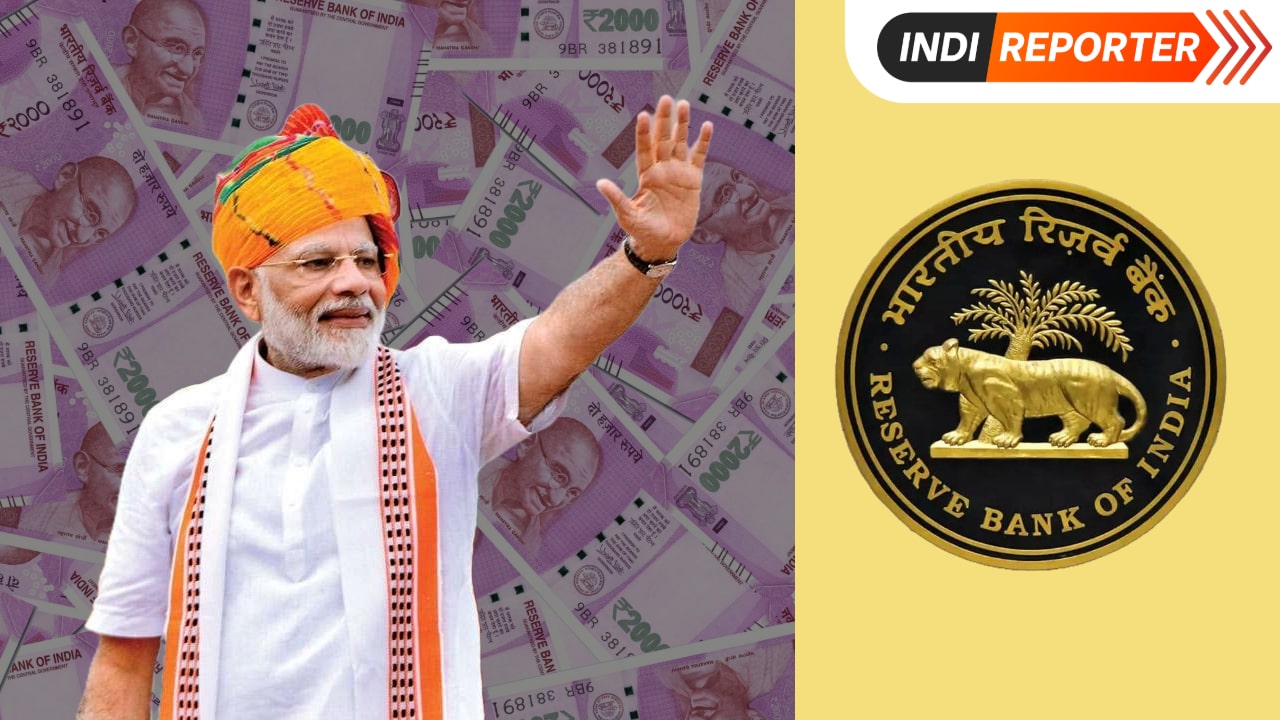In an unprecedented move, the Reserve Bank of India (RBI) has announced a record dividend payment of Rs 2.11 lakh crore to the Indian government. This decision, approved in a recent meeting of the RBI’s Central Board of Directors, marks the highest surplus transfer in the central bank’s history. This transfer, which far exceeds the anticipated Rs 1 lakh crore, will have substantial implications for the government’s financial strategy and the overall economy.
What is RBI and Why Does It Transfer Surplus to the Government?
The Reserve Bank of India, established in 1935, is the central bank of the country. It was nationalized in 1949, making it a fully government-owned institution. As per Section 47 of the RBI Act of 1934, the RBI must transfer any surplus profits to the government. These transfers are crucial for the government’s finances, providing additional funds for public spending and investment in various sectors.

Historical Context of RBI’s Surplus Transfers
Historically, the RBI has transferred varying amounts of surplus to the government. Over the past few years, the amounts have ranged from Rs 30,000 crore to Rs 1.75 lakh crore. The previous highest transfer was in 2018-19, when the RBI transferred Rs 1.75 lakh crore. This year’s transfer of Rs 2.11 lakh crore surpasses all previous records, highlighting a significant increase in the central bank’s profitability.
Recent Surplus Transfers
- 2015-16: Rs 65,000 crore
- 2018: Rs 30,000 crore
- 2018-19: Rs 1.75 lakh crore
- 2020-21: Rs 57,000 crore
- 2021-22: Rs 99,000 crore
- 2022-23: Rs 87,000 crore

Reasons Behind the Record Dividend
Economic Capital Framework
The decision to transfer Rs 2.11 lakh crore is based on the Economic Capital Framework (ECF), which was implemented following the recommendations of the Bimal Jalan Committee in 2019. This framework ensures a structured and transparent process for determining the surplus to be transferred to the government.
Profit from Foreign Exchange Reserves
A significant portion of the RBI’s profit comes from its foreign exchange reserves. Over the past year, the RBI has earned substantial interest income from its holdings in foreign currencies, especially the US dollar. The Federal Reserve’s high-interest rates have contributed to increased earnings from these reserves.
Gold Holdings
The appreciation in the value of gold has also added to the RBI’s profits. As the price of gold has risen, the value of the RBI’s gold reserves has increased, contributing to the surplus.
Other Sources of Income
The RBI generates income through various other means, such as interest from government bonds, open market operations, and the printing of currency notes. These activities collectively contribute to the central bank’s profitability.
Impact on Government Finances
The transfer of Rs 2.11 lakh crore will significantly bolster the government’s finances. This unexpected windfall will allow the government to enhance its spending on welfare schemes, infrastructure projects, and other public investments. Additionally, it may reduce the need for borrowing from the market, thereby lowering interest rates and stimulating economic growth.
Reduced Borrowing Needs
With the additional funds from the RBI, the government may not need to borrow as much as initially planned. This reduction in borrowing could lower the fiscal deficit and improve the overall financial health of the country.
Impact on Bond Yields
The announcement of the record surplus transfer led to a drop in bond yields, as investors reacted positively to the news. Lower bond yields indicate reduced borrowing costs for the government and can lead to lower interest rates across the economy.
Criticisms and Concerns
While the record surplus transfer is generally seen as a positive development, it has also raised some concerns. Critics argue that transferring such a large amount could impact the RBI’s financial stability. However, the RBI has increased its Contingent Risk Buffer (CRB) to 6.5%, ensuring that it maintains adequate reserves to handle any financial emergencies.

What is the RBI’s surplus transfer?
The RBI’s surplus transfer is the amount of profit that the central bank gives to the government each year. This profit comes from various sources, including interest on foreign exchange reserves and government bonds, as well as income from printing currency.
Why is the RBI transferring a record Rs 2.11 lakh crore this year?
This year’s record transfer is due to higher earnings from foreign exchange reserves, increased value of gold holdings, and other income sources. The decision is also guided by the Economic Capital Framework.
How will the government use the surplus transfer?
The government will use the surplus transfer to enhance spending on welfare schemes, infrastructure projects, and other public investments. It may also reduce the need for borrowing, lowering the fiscal deficit.
What is the Economic Capital Framework?
The Economic Capital Framework (ECF) is a set of guidelines that determine the amount of surplus the RBI transfers to the government. It was implemented following recommendations by the Bimal Jalan Committee in 2019 to ensure a structured and transparent process.
Will the large transfer affect the RBI’s financial stability?
The RBI has increased its Contingent Risk Buffer (CRB) to 6.5%, ensuring it has adequate reserves to handle financial emergencies. This measure helps maintain the RBI’s financial stability despite the large transfer.
What impact will the surplus transfer have on bond yields?
The surplus transfer led to a drop in bond yields, reducing borrowing costs for the government and potentially leading to lower interest rates across the economy.
Conclusion
The Reserve Bank of India’s record dividend transfer of Rs 2.11 lakh crore to the Indian government marks a significant financial milestone. This substantial surplus will enhance the government’s ability to invest in public welfare and infrastructure, potentially reducing borrowing needs and stimulating economic growth. Despite some concerns, the RBI’s decision reflects a balance between maintaining financial stability and supporting the government’s fiscal needs.






